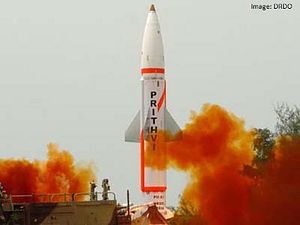On Friday, India successfully test-fired its Prithvi-II single-stage, liquid-fueled short-range ballistic missile from a test range in the country’s east. The test was part of a user trial by the Indian Army.
The Prithvi-II is an indigenously developed Indian system and Friday’s test comes amid a spate of Indian ballistic missile user trials and testing. New Delhi has also recently tested its Agni-II and sea-launched Brahmos supersonic cruise missile.
The Times of India, citing official sources, said that the “trial of the surface-to-surface missile, which has a strike range of 350 km, was carried out from a mobile launcher from launch complex-3 of the Integrated Test Range (ITR) at Chandipur.” The test took place in the Indian state of Odisha.
According to a statement released by India’s Defense Research and Development Organization (DRDO), the tested unit was “taken from routine production lot.” The trial unit achieved “high degree accuracy,” according to DRDO.
“The missile has the features to deceive any Anti Ballistic Missiles. [Indian] Army officials and DRDO Scientists witnessed the launch,” the statement added. “This launch in effect confirms the capabilities and dependability of the Prithvi Weapon System in strategic role.”
“The missile trajectory was tracked by the DRDO radars, electro-optical tracking systems and telemetry stations located along the coast of Odisha,” sources told the Times of India. India last test-fired two Prithvi-II missiles in November 2016. That test was meant to confirm New Delhi’s ability to launch its Prithvi-Iis in quick succession for a salvo strike.
The Prithvi-II is part of India’s operational suite of ballistic missile and is meant to serve as a surface-to-surface short-range nuclear delivery system, with a range of 350 kilometers. The missile is capable of delivering 500 kg to 1,000 kg payloads.
The missile, which was developed by India’s Defense Research and Development Organization, has been in service with the Indian armed forces since 2003, when it was inducted.































